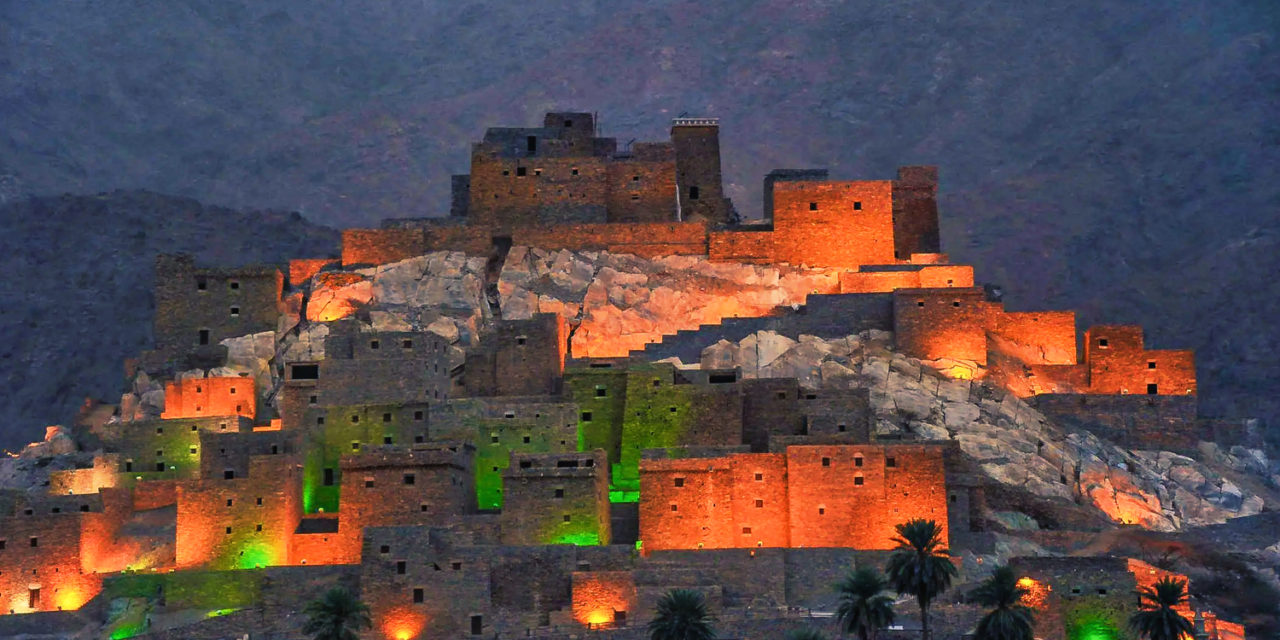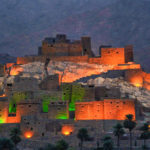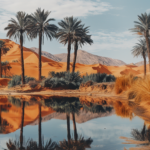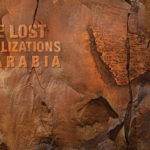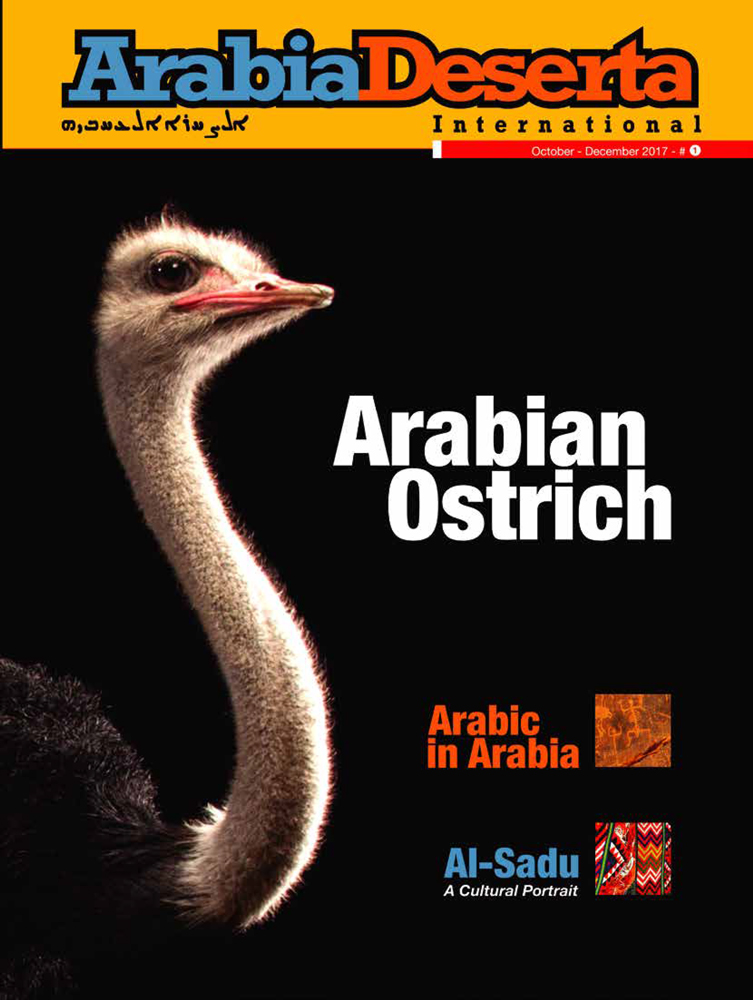ByAbdul Rahman Abu Riyah
Images by Ahmed Solaiman
Introduction:
It is among the most important and attractive traditional villages in Al-Baha region, representing a culture that is threatened by the impact of irreversible change. The village, which developed mainly during the 9th centuryCE /15th century AH, not only represents the architectural subgroup within the Assir Region but also the traditional forms of rural life, which are progressively displaced by the modern agricultural revolution.
Topography:
The village was built on a mountain top featuring a unique urban heritage organization and environmental configuration and its picturesque view extends towards the surrounding farms and plain that includes 312 houses, and one mosque. The houses had been built from polished stones, with multiple floors of two to four floors that are similar in terms of planning, and date back to the end of the 9th century CE. The village is further characterized by the presence of a permanent water source and defensive fortification surrounded by mountains on three sides.

Location:
Zee Ain is an archaeological village located in Tehamat Zahran about 20 kilometers from Al-Makhwat province and 24 kilometers from the Al-Baha, it was developed in the 9th century making it one of the oldest settlements in the region. The village was built on the summit of a White Mountain famous for the cultivation of banana, lemon, pepper, basil and Kadi, and handicrafts. The Banana plantations, orchards and gardens have been preserved; the ecological balance has been maintained even in the forestry environment, taking special care to respect historical authenticity. Thus, The Traditional Village of Zee Ain in Al-Baha is not a museum village devoid of any traditional activity, but a living community whose conservation includes farming
Architecture
The village has 58 dwellings two thirds of which are two to four floors houses.

Its Name:
The village was named after a water spring continuously flowing from the nearby mountains to several reservoirs and each particular pond has its own name. There is a local legend that talks about a man who lost his cane in one of the valleys, and to retrieve it he tracked it until he reached the village, gathered its inhabitants and retrieved his cane after digging the spring.
Village Design:
The village has 58 dwellings, 9 of which are composed of one floor, 19 from two floors, 11 from three floors and 10 from four floors. The village was constructed using load bearing walls system “Medamik” and the thickness of the walls are between 0.7 to almost 0.9 meters. Structures are roofed using Sider wood. The big rooms are roofed using columns known as “Al-zafer”, and above the Sedir wood there is a kind of stones known as “Salat” and the stones are covered with mud. The lower floors are used for reception and living, the upper floors for sleeping.Some of the buildings still exist since the establishment of the village and some are partially run-down and some are completely demolished.

The Village History:
The village witnessed many tribal battles before the Kingdom’s unification by King Abdul Aziz. The most important of these battles suffered by the region is when the tribes of Zahran and Ghamd met with the Turkish army lead by Muhammad Ali Pasha that ended with the defeat of the Turks; their burial place is known as “the Turks graves”.
Justification of Outstanding Universal Value
The village of Zee Ain is a huge archaeological treasure that few people appreciate its value, but those with long experience in the field of tourism, such as the Saudi Commission for Tourism and Antiquities rehabilitated a small portion of it but it still needs lots of efforts, to benefit from this village and its magnificent landscapes. Serious action is needed to attract tourism using SCTA capabilities or experience to develop such wonderful places and important sites and make them the backbone of local economy and national income.

